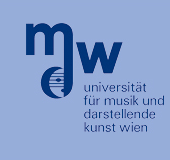Abstract

Estefania Cano
Interactive tools have proved to be useful for music education as they provide the user with real time performance assessment, unlimited orientation and practice time, entertaining ways of displaying content and variable levels of difficulty in a single application. The algorithms behind these tools require in general solid rhythmic, harmonic and melodic processing approaches as well as flexibility in terms of parameter selection and processing time. In the past years, many efforts have been made by the Music Information Retrieval (MIR) community to improve algorithm performance. Even though good results have been obtained in systems for harmonic-percussive separation, singing voice extraction, accompaniment track creation, pitch tracking, rhythm and beat extraction, audio segmentation and chord transcription among others, there is still much room for improvement and exploration. In particular, better understanding of instrument acoustics and models and their implications in signal processing is needed. Many studies have attempted to include instrument dependent spectral information in their algorithms. However, most of them are trained systems that use a set of collected reference data but that include very limited or no real acoustical models and parameters. In contrast, some few systems have attempted to use instrument specific acoustical models but suffer in general from lack of robustness due to the great variability found in terms of playing styles, setups and performers that necessarily create deviations from the model. It is then important and relevant to explore possibilities of building algorithms that combine the flexibility of trained systems with current signal processing techniques and real structured acoustical information from the treated instruments. Furthermore real testing data, recordings, measurements and design parameters used by acousticians and instrument makers can also be important in terms of generality and flexibility in any built system.

